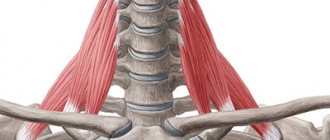Rett syndrome, what is it? Causes and treatment
Rett syndrome is a progressive degenerative disease of the central nervous system, named after the scientist who first described this pathology.
The syndrome is diagnosed during the first 2 years of a child’s life, and it usually occurs in children with normal pregnancy, childbirth and full development in the first months of life (sometimes up to 1.5 years). Then development stops and regression of all forms of mental activity occurs, which is accompanied by the emergence of autism, motor stereotypy, and progressive motor decline. Subsequently, this disease leads to disability and even death.
The main manifestations of the disease are the reverse development of already acquired motor and speech skills between the ages of 1.5 and 3-4 years, repeated stereotypical and uncontrolled hand movements, and mental retardation.
What it is?
Rett syndrome is a psychoneurological hereditary disease, occurs almost exclusively in girls with a frequency of 1:10,000 - 1:15,000, and is the cause of severe mental retardation in girls.
The disease was first described by the Austrian neurologist Andreas Rett in 1966. The child’s development proceeds normally until 6–18 months, but then the girl’s acquired speech, motor, and subject-role skills begin to disappear.
This condition is characterized by stereotypical, monotonous movements of the hands, rubbing and wringing of the hands, which are not of a purposeful nature. Speech becomes difficult, responses become monotonous or echolalic, and at times speech completely disappears (mutism).
Diagnosis of Rett syndrome
Diagnosis of Rett syndrome is carried out on the basis of studying the child’s medical history, his current condition, as well as additional instrumental methods and molecular genetic tests.
There are diagnostic criteria that are divided into three groups: mandatory, secondary and exclusionary.
The first group includes clinical manifestations indicating the classic form of the disease. The following symptoms must be present:
- pregnancy, childbirth and the postpartum period proceeded without complications;
- up to 6–18 months, the child’s development corresponded to his age;
- at birth, head circumference was normal, but in the period from 5 months to 4 years, its growth began to slow down;
- in the period from six months to two and a half years, disturbance of voluntary movements of the hands;
- severe speech impairment, severe delay in psychomotor development;
- disorder of gait and coordination of movements at the age of 1 – 4 years.
Additional (minor) features include the following:
- rachiocampsis;
- seizures;
- respiratory disorders;
- growth retardation.
Exclusionary criteria help distinguish Rett syndrome in children from other neurological pathologies:
- congenital microcephaly;
- intrauterine growth retardation, as well as other developmental anomalies;
- traumatic brain injuries;
- perinatal brain damage;
- neuroinfections.
Rett syndrome is excluded if there is at least one such sign.
Sometimes the set of clinical manifestations does not quite correspond to the classical course of the disease. It is then regarded as an atypical or incomplete form. When examining patients with this syndrome, a decrease in head circumference, growth retardation and growth arrest, and lack of speech are noted. Additionally, instrumental research methods are used.
Computed or magnetic resonance imaging (CT or MRI) of the brain: they are used to study the structures of the brain, as well as the presence of pathological disorders. With this disease, unclear differentiation of white and gray matter, a decrease in the size of the organ, and a decrease in the folding of the cerebral cortex are revealed. In addition, extrapyramidal disorders (impaired speech, coordination of movements, etc.) and signs of lack of brain development are detected.
Electroencephalography (EEG) allows you to study the bioelectrical activity of the brain. It confirms its decrease and a sharply weakened reaction to external stimuli.
Electrocardiography (ECG), echocardiography (EchoCG) indicate the presence of heart pathology. A rapid pulse, rhythm disturbances, and chronic heart failure may occur.
Ultrasound examination (ultrasound) of the abdominal organs - in approximately 20 - 30% of patients, underdevelopment of the spleen or liver is detected. Electroneuromyography: with its help, the conduction of nerve impulses to muscles, joints, etc. is studied. The most accurate information is provided by the methods of modern genetics. Such confirmation of the syndrome is also possible within the framework of prenatal (prenatal) diagnosis of genetic diseases.
Differential diagnosis of Rett syndrome and autism is also necessary due to the similarities of these two diseases:
| Symptoms | Rett syndrome | Autism |
| The appearance of the first signs | Do not appear until six months and may appear a year or two after birth | Appears up to six months |
| Physical activity | There is stiffness in movement | The movements are smooth, the gait is peculiar and mannered. |
| Rituals with objects (regular desire to systematize objects according to certain characteristics) | Absent in this pathology | Characteristic ghost of autism |
| Epileptic seizures | Identified in most cases, movements at the time of a seizure have a high frequency | They are observed quite rarely, movements at the time of a seizure are of low frequency |
| Breathing disorders, slow physical development | Present | None |
| Stereotypes | The arms move along the midline of the body, the movements are rhythmic and monotonous | Hands move differently and movements are more complex |
Causes
In the 90s, there was a hypothesis that Rett syndrome is a specific disorder that is associated with gene mutations localized on the X chromosome; caused by a dominant trait and in boys cannot be combined with life. Subsequently, the transmission of the mutant gene by the father's X chromosome was confirmed by the fact that this hereditary pathology can very rarely occur in boys, since they receive the Y chromosome from their father. That is why, with the family type of inheritance of Rett syndrome, boys in such families are born practically healthy.
Currently, there is evidence of the hereditary nature of the disease. The genetic cause of Rett syndrome is associated with an altered X chromosome and mutations that occur in genes that regulate the replication process. In this case, there is a deficiency of certain proteins that regulate this growth, and their cholinergic function is also impaired.
Rett syndrome has been hypothesized to be a developmental disorder characterized by a deficiency of neurotrophic factors. Thus, the basal ganglia, lower motor neurons are affected, and the spinal cord and hypothalamus are involved. Analyzing morphological changes, scientists came to the conclusion that there is a slowdown in brain development from birth, which completely stops growing by the age of four. And also in such children there is a slowdown in the growth of the body and some somatic organs.
Children with Rett syndrome
The family has a way of life
A family destabilized and traumatized by a child's diagnosis may also need time to change their attitudes due to the extremely painful experience, as the disorder leaves an imprint on both the person with Rett syndrome and those around him.
Announcing the diagnosis: a particularly important period
The announcement of the diagnosis does not pass without a trace for the family.
The diagnosis sometimes gives rise to paradoxical effects in the minds of parents: it can contribute to their gaining confidence as a reaction to anxiety caused by the development of various motor and behavioral disorders in the child, observed for some time, or, conversely, lead to a sharp loss of strength from the realization that What this diagnosis means for their child's future.
Loss of strength is accompanied by anxiety about the unknown. Often many conflicting feelings arise in the souls of parents: a feeling of guilt, anger, a desire for everything to stop, sadness, anxiety, love, tenderness, joy, sympathy, hope, etc.
Once the diagnosis is announced, it is important to exercise self-control and ensure that the intensity and conflict of these feelings do not have a negative impact on the child with Rett syndrome, as well as on his siblings and on the parents themselves. It is important that each family member is able to determine for himself the necessary distance in relation to destructive and powerful affects (guilt, anger, depression, denial, etc.). There is a risk that everyone will become isolated in their experiences. This moment is a test for everyone, everyone experiences it, showing their strengths or weaknesses.
Parents need to talk about this topic among themselves and with others.
Some spouses, unconsciously wanting to protect each other, do not want or cannot tell each other how they feel. Such a lack of communication can have a detrimental effect both on their relationships with each other and on family relationships in general (for example, there is a reluctance to meet with their parents). Over time, some are able to draw strength from these life experiences.
Other family members (grandparents, aunts and uncles, etc.) are also affected by similar emotional reactions. They often do not allow themselves to express their feelings out of shame at the suffering of the child's parents.
The reactions of each family member are very individual - this includes distance, mutual assistance, conflicts, silence, depression, active support, and friendly attention. Individual reactions vary greatly and depend on whether the person has had experience with illness and disability, on awareness of the type of pathology and ways to overcome its consequences (for example, caring for a person with epilepsy), as well as on the relationships that have already developed between parents both by the child and from the attitudes of the child’s parents towards each other (the need to isolate, take care of each other, share with each other, etc.).
Siblings ask important life questions
Siblings also ask themselves questions and need support in finding answers to these questions. “Why her and not me?”, “Why are my parents so unhappy?”, “Will I or my children have the same problems?”, “Is this my fault?”, “Why is it difficult for me to invite my friends to your home?”, “Will I have to look after her in the future?” The issues and experiences of the siblings of a special needs child also depend, as in any family, on the personality of each individual, on their age and position in the family, on their feelings, emotional maturity and especially on how this experience is experienced by parents, family, and friends . Comparing a child with a “special” sister complicates the process of self-determination, and feelings of guilt can lead to the child not wanting to develop, so as not to create a gap between his skills and those of his sister. However, there is no single scenario in this situation - everyone reacts differently. There are children who, on the contrary, feel the need to compensate for the violations that they see in their sister and devote themselves entirely to study or sports, thereby as if healing their own and their parent’s wound. Some experience this situation without such suffering that leads to a change in life attitudes; the characteristics of loved ones are easily experienced by them.
Often siblings need to talk about all these issues: about disabilities, about differences, about worries and fears, about what they think their parents expect from them.
In this important and sensitive conversation, it is necessary to take into account all the questions that arise in each child, but not to get ahead of them. You need to be attentive to the signals that such a conversation is necessary: silence, shyness, lethargy, refusal to help your sister or, conversely, her excessive care, aggressiveness, jealousy, regression, enuresis, imitation of your sister’s behavior, depression, compensatory attitudes (for example , excessive diligence at school), difficulties at school, etc.
Seeking help from a specialist (psychologist, family therapist) may be necessary for the development of family relationships. The practice of therapeutic meetings allows each family member to express directly what they are thinking and feeling, in an atmosphere of security and respect for everyone's life experiences and while maintaining confidentiality.
Fields
It is necessary to seek family and personal balance
Parents face the difficult task of achieving the right balance, which must delicately balance the needs of the girl, their own needs as a couple, and the needs of the other children in the family. As we noted above, some parents do not recognize violations in their own child and try to give their all, trying to do everything possible for him. There are also parents who seem inhibited, discouraged by the announcement of the diagnosis, frozen in their position of total service to the child.
There are other ways to protect yourself from unspeakable pain.
In any case, people should not be judged for this, since it is completely normal to defend against what cannot be accepted. Everyone deals with this as best they can.
What parent does not want the best for their child, does not want him to become independent and find friends, a family and professional life that would correspond to his aspirations? The announcement of the diagnosis casts doubt on such hopes, and parents inevitably find themselves face to face with this problem. Thus, a contradiction arises between their conscious and unconscious desires and reality.
This path takes time
Creating new guidelines, building new plans for the future, new hopes, surprise from discovering new unexpected opportunities for yourself or your child - all this takes time. It is necessary so that, daily faced with the need for struggle and significant mobilization of efforts that a child requires, as well as thinking about his future, about adulthood or about the attitude of others towards him, to realize the relativity of what is happening.
Families often report that the views they have encountered in their social environment have been “unbearable.” These glances, in their opinion, expressed embarrassment, pity, indifference, fear, and curiosity. These views hurt them and made them feel rejected by society. To the people who looked at them like that, their parents responded in kind.
Some parents also point to the influence of their own attitude towards pathology, which seems to be transmitted to others: “Thanks to the awareness that tension in communication comes from us too, we develop a more distant model of behavior and cope with negative manifestations from others.”
Consent and readiness for necessary separations
This path is very difficult for parents because of the inconsistency of internal sensations, because of the attitude of the social environment towards such children, but most of all - because of the constant need to resolve questions that frighten with ambiguity or paradoxical answers.
For example, one of these paradoxes is that you need to learn to internally separate from your child in order to help him achieve greater psychological independence, mature, and at the same time continue to satisfy his basic needs stemming from the lack of his autonomy (as it would be done if caring for a very young child). However, despite this paradoxical reality, it is necessary to see that the child is growing up, even if his emotional reactions are consistent with a younger age and he still needs to be fed, bathed, etc. Each person must achieve psychological independence, and this happens thanks to the internal “parting” with the first objects of his love - his parents.
This separation occurs on a psychological level, not on a physical one. Real life continues to include all those worries that are associated with the presence of a special child in the family and that are necessary on a daily basis.
Psychological separation is necessary in order to allow the child to grow up (while maintaining all models of support); in order to allow him to establish close relationships with other people, “because parents will not always be there and because the child has the right to meet other people in life.”
Psychological separation is also necessary for parents - so that in their lives there is room for both their spouse and other children, so that the life of a married couple and the family as a whole is not fixed on one single person, so that everyone can, according to their own status , take your place and contribute to the overall family dynamic.
Therefore, it is necessary to organize daily life in such a way that it takes into account the wishes and special needs of a child with Rett syndrome, his brothers and sisters (time is needed for various specific activities with children), all family members, but especially the needs and desires of the couple themselves.
Each family member chooses his own path and accumulates his own subjective experience of the fact that he is the parent, brother or sister of a person with multiple disabilities.
The individual path of each family member helps him take that unique and correct position towards a child with Rett syndrome, which can have a significant impact on family relationships and on his own attitude towards the world around him.
Parents and specialists: the need for cooperation
It is difficult to overestimate the psychological and physical contribution that parents make to the development of their own child, the importance of the support provided by family, friends, public organizations, the state, the importance of cooperation between specialists accompanying the child (medics, paramedics, teachers).
A child with developmental disabilities needs comprehensive support, which is based on mutual respect, communication and trust.
Many parents report that they suffer greatly, but that having a child with Rett Syndrome enriches their lives. Doubt, grief, discouragement coexist with hope, strength, joy and humility.
Stages of development
Rett syndrome develops over a long period of time, so the disease is usually divided into several stages depending on the deterioration of the patient’s condition:
- Stagnation is a temporary suspension of the disease, in which there is no increase in symptoms. Lasts from 6-18 months or more. The child loses interest in surrounding events, muscle hypotonia, and slower growth of the head and limbs are noticeable.
- Deterioration of condition. The stage lasts from 1 year to 3-4 years. If a child has mastered the skills of speech and movement, they gradually disappear. Stereotyped hand manipulations, disturbances in the pulmonary system (hyperventilation, shortness of breath, sudden cessation of breathing), incoordination of movements, and unmotivated anxiety appear. Already at stage 2, convulsive seizures appear, the treatment of which is not effective.
- Relative stability, this stage can continue until early school age. Mental insufficiency, convulsions, low weight gain, and impaired emotional contact with others are noted. Epileptic seizures are replaced by inhibition of the nervous system.
- The final stage is characterized by a decrease in the frequency of seizures, but cachexia, scoliosis, and severe respiratory problems appear. Inability to move is possible; short stature of the limbs and small head circumference are determined.
The characteristic symptoms inherent in a particular stage are not one hundred percent arbitrary and may vary depending on the transience of the disease and individual clinical cases.
Stages of development of Rett syndrome
At stage, the disease is distributed rather arbitrarily, since there are no clear boundaries in the stages of development of the pathology. Experts identify four critical stages of disease progression:
- It is observed in children aged from 6 months to 1.5 years. Accompanied by a decrease in interest in people and games, as well as a slowdown in psychological and physical development.
- Begins at age 1 and lasts until approximately 3 years. It is characterized by a rapid regression of all acquired skills and abilities, an increase in anxiety attacks and sleep disturbances. Stereotyped hand movements occur, and the ability to coordinate one’s actions and walk is lost. The girl no longer interacts with others and practically does not move.
- Lasts from 2 to 10 years. It is distinguished by stabilizing the child’s condition, as well as minimizing attacks of anxiety and irritability. The girl learns to use her hands and makes eye contact. In some cases, this stage does not progress to the next and lasts a lifetime.
- Develops in girls over 10 years of age. It is characterized by the progression of motility disorders and the growth of muscle atrophy. With the breakdown of physiological skills and abilities, a person’s emotional preferences and attachments may remain.
Symptoms of Rett syndrome
Separately, attention should be paid to the main symptoms by which Rett syndrome is determined, since in medical practice there have been cases where, due to an incorrect interpretation of the signs of the disease, a completely different diagnosis was made, which ultimately led to a rapid death.
Rett syndrome is defined by the following criteria:
- Pronounced microcephaly. In the period after birth, the child has a normal ratio of the size of the head to the body. Gradually, head growth slows down, which is caused by a decrease in brain size.
- Developing scoliosis. Spinal disorders are typical for all children suffering from this disease. The cause of back curvature is muscle dystonia.
- Mental development. Rett syndrome is characterized by profound mental retardation and a lack of rich cognitive activity, which is usually present in all young children. Many patients initially acquire the skills of speaking and perceiving the world around them, but over time they completely lose them. The child has a noticeable absence of any expressive or impressive communication with the environment. To determine disorders in mental development, specialists use standardized psychological tests.
- Specific hand movements. Children lose the ability to hold any objects, be it a toy or a bottle of milk. In this case, monotonous hand movements occur, reminiscent of washing under a tap, and are also characterized by squeezing, fingering, clapping at chest level, face and behind the back. The patient may also suck or bite his hands, or randomly hit himself with them on different parts of the body.
- Convulsive seizures. In almost 80% of cases, girls suffer from epileptic seizures, which are also accompanied by partial seizures, drop attacks, and tonic-clonic type of seizure. Rett syndrome is characterized by the following signs of the formation of a pre-seizure state: tremors, difficulty breathing, sudden movements, gaze directed at one point with complete numbness of the body. These symptoms are often treated with anticonvulsants, but such drugs do not provide any positive effect, since the listed symptoms do not belong to the group of convulsive diseases, but represent only Rett syndrome.
- Neurochemical symptoms. In a study of patients who died with severe Rett syndrome, scientists determined that their brain sizes were either 12% or 24% smaller than normal, depending on the patient's age group. In the cerebellum, cerebral cortex and dorsal ganglia, neuronal deficits and gliosis were observed, as well as reduced levels of pigmentation. According to morphological studies, by the age of four, people suffering from Rett syndrome were diagnosed with a complete stop in brain development and slower growth of other organs and parts of the body.
Rett syndrome
The etiology and pathogenesis of Rett syndrome is quite complex and is determined by the interaction of various genes and their influence on the development of the human brain. The root cause of the disease is a nonsense mutation (according to some data, missense mutations also lead to similar disorders) of the MECP2 gene, localized on the X chromosome, as a result of which its expression completely stops. It encodes a specific protein called methyl-CpG-binding protein 2, which is involved in regulating the transcription of certain regions of DNA. This protein contains two domains, one of which promotes its attachment to methylated regions of chromosomes (which are located near genes that regulate brain development), and the second acts as a transcription repressor. The cause of Rett syndrome is precisely the lack of inhibition of certain genes, which leads to disruption of the formation of nervous tissue.
However, Rett syndrome cannot be considered a neurodegenerative disease, since it does not involve destruction of neurons or neuroglia. Histological studies of the brain tissue of patients reveal a violation of the ultrastructure of nerve cells - a decrease in size, a change in the number of dendrites, and difficult formation of nerve tissue. The volume of neuroglia in Rett syndrome is reduced, as a result of which, at the macroscopic level, the size of the brain also decreases by 20-30% compared to the age norm. One of the reasons for the above processes is the lack of inhibition of the release of the GAD67 enzyme (inhibition of the gene for this enzyme is carried out by methyl-CpG-binding protein 2), which, in turn, leads to an increase in the concentration of inhibitory transmitters from the GABA group. As a result, patients with Rett syndrome experience a significant prevalence of inhibition processes in the brain, which affects not only the physiology of the central nervous system, but also its morphological structure.
Geneticists have found that the complete absence of the normal MECP2 gene in the genome in the vast majority of cases is a lethal condition and often leads to intrauterine death of the fetus. This condition occurs in boys (due to the presence of only one X chromosome) or in homozygous girls, which is extremely rare. Because of this, in the gender distribution of Rett syndrome, there is an absolute predominance of female patients. Mutations of the MECP2 gene in most cases are spontaneous or germinal - presumably 70% of cases of this disease are caused by a genetic defect in the X chromosome in the germ cells of the father. Defects of this gene also lead to other pathologies of the central nervous system - Zapel variant, Luba syndrome (X-linked mental retardation in boys), congenital encephalopathy. Some researchers classify these conditions as atypical forms of Rett syndrome.
Diagnostics
A consultation with a psychiatrist begins with a medical history. During a conversation with parents, the specialist finds out:
- whether pregnancy and childbirth proceeded normally;
- how the child developed during the first 6–18 months;
- what is the dynamics of head growth;
- when the child began to lose acquired skills;
- whether the patient has stereotypical hand movements, seizures, speech, breathing, gait and coordination disorders, delayed psychomotor development.
For an accurate diagnosis, the doctor often prescribes additional examinations:
- EEG (electroencephalogram), which measures the bioelectrical activity of the brain (a slow background rhythm is evidence of a mutation in the X chromosome);
- CT scan of the brain, which can detect changes indicating cessation of brain development;
- Ultrasound of internal organs, giving an idea of the degree of their development.
Without testing data, Rett syndrome may be confused with autism. Both of these conditions are characterized by:
- decreased learning ability;
- loss of speech;
- lack of control over the pelvic organs;
- withdrawal from the outside world;
- lack of eye contact;
- reluctance to make emotional and social contact;
- disturbance of body sensitivity;
- causeless screaming and crying.
You can distinguish one disease from another using differential diagnosis, developed in 1988 at the International Conference on Rett Syndrome.
Differential medical diagnostic data:
| Symptom Description | Manifestation in Rett syndrome | Manifestation in early autism |
| Slow growth of hands, feet and head | A characteristic symptom of Rett syndrome | No sign |
| Developmental delay between six months and one year of age | Doesn't appear | Often observed |
| Respiratory disorders | Often observed | Do not appear |
| Stereotypical hand movements | Repeated monotonous hand movements in the waist area | Varied and complex movements not limited to the belt area |
| Epileptic seizures | Often repeated | Rarely appear |
| Coordination of movements | Progressive loss of coordination leading to complete immobility | Movement and gait are almost normal, but seem mannered |
Using differential diagnostics, not only doctors, but also parents themselves can distinguish autism from Rett syndrome.
Diagnostic methods
Diagnosis of Rett syndrome is based on the observed clinical picture. When the first suspicions arise, in order to confirm the diagnosis and prescribe adequate treatment, children are referred for hardware examination:
- The brain is analyzed using computed tomography. CT scans reveal neuromorphological changes that indicate a stop in brain development.
- The bioelectrical activity of the brain is measured using an electroencephalogram (EEG). The presence of X chromosome mutations is indicated by a slow background rhythm.
- In Rett syndrome, analysis of ultrasound results may indicate pathological underdevelopment of some internal organs, for example, the liver.
Rett syndrome, in its early stages, is sometimes compared to autism. In both cases, children are characterized by mental retardation and “loss of connection” with the outside world. However, there are a number of differences that make it possible to identify two completely different diseases.
Differential medical diagnostic data:
| № | Symptom Description | Presence and manifestation of symptoms in Rett syndrome | Presence and manifestation of a symptom in early childhood autism |
| 1 | Developmental delay between six months and one year of age | Doesn't appear | Often observed |
| 2 | Stereotypical hand movements | Repeated monotonous hand movements in the waist area | Varied and complex movements not limited to the belt area |
| 3 | Stereotypical manipulation of objects | Not observed | Characteristic of the disease, constantly recurring |
| 4 | Coordination of movements | Progressive loss of coordination leading to complete immobility | Movement and gait are almost normal, but seem mannered |
| 5 | Epileptic seizures | Often repeated | Rarely appear |
| 6 | Respiratory disorders | Often observed | Do not appear |
| 7 | Slow growth of hands, feet and head | A characteristic symptom of Rett syndrome | No sign |
Treatment
At this stage of medical development, Rett syndrome is an incurable disease. However, with the help of medications, rehabilitation techniques and a special diet, it is possible to improve the child’s condition, prevent serious body deformations and improve the patient’s quality of life.
To improve your general condition and alleviate symptoms, your doctor may prescribe the following medications:
- antiparkinsonian drugs (Bromocriptine, Perlodel);
- nootropics to improve brain function (Cortexin, Cerebrolysin, Ceraxon);
- medications to regulate the biological regime of day and night (Melatonin);
- drugs to calm the nervous system and correct behavior (Noofen, Phenibut, Glycine);
- antiepileptic drugs to reduce the number of seizures (Carbamazepine, Lamotrigine);
- means to support the functioning of internal organs: heart, liver, stomach, intestines, pancreas.
With severe epilepsy, taking anticonvulsants may not be effective. Often children with Rett syndrome “outgrow” the seizures themselves: by the age of 10, seizures become rare and sometimes go away altogether.
What signs may indicate the development of the disease
The causes of Rett syndrome are gene mutations, that is, the disease is hereditary. Therefore, the risk group includes children who have already had a similar pathology in their family. Up to a year, such a baby develops normally, but at some point he begins to lose acquired skills, he has:
- loss of interest in toys;
- physical activity decreases;
- the reaction to external stimuli slows down - light, sounds, movements;
- speech skills disappear.
Symptoms usually appear in children's first year of life. Therefore, it is necessary to carefully monitor children: at the first stage of the development of the disease, there is every chance to provide them with the necessary medical care and achieve stable remission. The second stage is characterized by a sharp deterioration in health and is often characterized by chaotic movements such as twisting of the wrists or uncontrollable clapping. At this stage, Rett syndrome in girls can be confused with manifestations of autism spectrum disorders. Rett syndrome in boys is very rare and in the second stage has pronounced symptoms, one of which is associated with respiratory dysfunction (hyperventilation, when a small patient literally swallows air).
The second stage of the disease, as a rule, lasts until the age of four, after which false remission occurs for a period of 8–10 years. The young patient becomes quite calm and balanced, but at the same time completely loses his speech skills. At the fourth stage, Rett syndrome appears as total dementia; the teenager not only loses all skills, but also cannot walk independently, eat food, and practically does not react to external stimuli.
Rehabilitation
The rehabilitation program may include:
- Consultations with a psychologist and speech therapist - once a week.
- Music therapy increases a child’s communicative activity.
- Massage and physical therapy are aimed at strengthening muscles and increasing their tone.
The method invented by the French otolaryngologist Alfred Tomatis has good reviews. The goal is to re-teach the child the process of listening, which improves the ability to learn and master languages, increases creativity and has a positive effect on the baby's social behavior.
- Art therapy and dolphin therapy have a positive effect on the psycho-emotional state of the child.
- Hippotherapy (therapeutic horse riding) and hydrotherapy (showers, dousing, rubbing) have a biomechanical effect on the child’s body and strengthens muscles.
- ABA therapy improves the social adaptation of patients. Some complex actions (contact, creative play, speech) are broken down into small parts for the child. In the future they will be combined into one large block.
It is worth noting that visiting an osteopath has a good therapeutic effect. Improvement is observed after just a few sessions.
Nutritional Features
Feeding a sick child presents certain difficulties. Many girls experience increased salivation and poor oral health, so feeding them is a real problem. Some children have a good appetite and enjoy eating their favorite foods. But they all eat very slowly; the process of eating can last up to an hour and a half. As for drinking, almost half of sick babies have difficulties with swallowing, which are manifested by choking, coughing and can threaten liquid getting into the respiratory tract.
- Children with Rett syndrome have difficulty chewing food containing coarse fiber (meat, raw vegetables, fruits), so it must be crushed and given as a puree. It is better to offer side dishes in small pieces or mashed. During feeding, you need to make sure that the baby's head is at the correct angle and does not fall back.
- In some cases, when the process of absorbing food becomes too problematic and painful, it makes sense to feed the child through a tube with special nutritional mixtures. This option can significantly improve the baby’s quality of life and can become a real salvation for him.
Many children suffer from nausea and often refuse to eat, so it can be very difficult to feed them; such babies quickly lose weight. Therefore, food should be enriched with proteins and fats, sufficiently high in calories and fortified. It is recommended to feed the child in small portions and often (every 3 hours) so as not to overload the digestive system. Young children are given fortified milk or formula.
Treatment of Rett syndrome
Treatment of this disease is based on symptomatic therapy, since it is impossible to eliminate the cause of the development of the syndrome and its further progression, however, this process can be slowed down.
In order to improve the child’s condition, drug therapy is used with drugs that eliminate or reduce the severity of certain clinical manifestations:
- nootropic drugs improve learning ability and have a beneficial effect on blood supply to the brain;
- dopamine receptor stimulants have a positive effect on motor skills;
- anticonvulsants (due to the characteristics of the disease they show low effectiveness);
- sleeping pills.
Depending on the symptoms, medications may also be prescribed to treat diseases of the cardiovascular system, liver, and spleen.
Massage for this disease improves muscle tone, has a beneficial effect on motor skills, and has a relaxing and calming effect. Therapeutic gymnastics and physical education can improve motor skills, maintain existing muscle tone, and have a positive effect on the emotional state of a sick child. A psychologist and speech pathologist help improve motor skills and communication skills. Osteopathy has a positive effect on the condition of the spine.
Music therapy shows good results: the baby becomes more sociable, balanced, more emotional, and the level of anxiety decreases. If there is no epileptoid activity, then the so-called tomatis therapy can be used, when the child listens to special music that has a beneficial effect on his brain activity. Hippotherapy (horseback riding), hydrotherapy (mineral baths, hydromassage), art therapy (creative activities separately at home or in a group with music, drawing, etc.) are also used.
If you have Rett syndrome, you must follow a therapeutic diet. It implies a diet high in fiber, fats and vitamins. The child must be fed high-calorie foods and special products to increase body weight.
Children with this syndrome have difficulty chewing food containing coarse fiber (raw vegetables, fruits, meat), so it should be crushed and given as a puree. During feeding, it is necessary to ensure that the baby's head is at the correct angle and does not fall back.
Forecast
To find adequate treatment, doctors and scientists around the world are conducting intensive research into a childhood disorder called Rett syndrome. Data and results from research centers dealing with this problem already confirm the version that the processes triggered by pathology are reversible.
Active development of a strategy for the use of stem cells is underway, on which the treatment of Rett syndrome will be based. Already today, preliminary means have been tested on laboratory mice. Professor Belichenko's experiments, which were carried out at the University of California, give a positive prognosis and hope for the early scientific discovery of an effective treatment for Rett syndrome.
Rett syndrome
Rett syndrome is an X-linked dominant disease caused by deletion of the Xq28 locus or mutations of the MECP2 gene located at this locus. The MECP2 gene consists of 4 exons and encodes methyl-CpG-binding protein 2. Mutations in this gene are responsible for 90-95% of cases of classic Rett syndrome and 40-60% of cases of atypical forms of Rett syndrome. The MeCP2 protein belongs to the family of methyl-binding proteins. It binds to specific target genes in the rapidly developing brain and regulates their expression, thereby influencing the development of neural tissue. About 800 mutations are described in the gene, most of which are nucleotide substitutions and are localized in exons 3 and 4. Nine point mutations are the most common (R168X, R270X, R255X, T158M, R306C, R294X, R133C, R106W, L386fs), the share of which is 60-70%, about 10% of mutations are small deletions (20-150 bp) in the carboxy-terminal segment of the MECP2 gene, large rearrangements involving entire exons or even the gene range from 7.5% in atypical cases to 37 % in the classical form.
The incidence of the disease is 1:10000 - 1:15000. Cases of Rett syndrome are usually sporadic, representing de novo mutations, but familial cases (with gonadal mosaicism in one of the parents) have also been described. This disease is the second most common cause of severe mental retardation in girls after Down syndrome. For fetuses hemizygous for the X chromosome, mutations in the MECP2 gene are lethal. Therefore, Rett syndrome practically does not occur in men, with the exception of cases of Klinefelter syndrome and somatic mosaicism.
In the classic form of Rett syndrome, the early psychomotor development of the child proceeds normally, but at the age of 6-18 months, development stops and subsequently there is a regression of acquired motor skills, speech, social contacts, and stereotypical hand movements appear (rubbing, washing movements, etc.) , convulsions, mental retardation occurs. Patients experience gait disturbance, muscle hypotonia, microcephaly, and scoliosis. After regression, some improvement or stabilization of the condition occurs.
In addition to the classic Rett syndrome, there are atypical forms: variant Zapella with preserved speech, a form with late onset of regression, X-linked syndromic mental retardation in boys (Luba type), severe congenital encephalopathy in boys, etc. Mutations in the MECP2 gene found in some syndromes characterized by mental retardation, such as Angelman-like syndrome, a syndrome similar to fragile X syndrome, and phenotypes similar to autism. Other genes (CDKL5, FOXG1) are responsible for the development of some atypical forms, such as early epileptic encephalopathy 2, the congenital form of Rett syndrome.
At the Center for Molecular Genetics, quantitative MLPA is used to search for deletion/duplication of the Xq28 locus and direct automatic sequencing of the MECP2 gene.
Rett syndrome
Prevention
Physical therapy is one of the optimal ways to correct movement disorders. It includes exercises aimed at maintaining flexibility and range of motion of the limbs, as well as maintaining walking skills for as long as possible.
Psychological programs are proposed for the maximum development of remaining intact motor skills and the formation of a “language of communication” on their basis. Music therapy is also used, as it has a beneficial calming effect on children and partially compensates for impaired contact with the outside world. Research into Rett syndrome is intensive throughout the world, and it is probably only a matter of time before a specific biological marker is discovered.
When this happens, there will be new prospects for treating pathology or alleviating the condition of patients, as well as the possibility of prenatal screening and prevention of this serious disease.
Diagnosis and treatment
To confirm this disease, the baby will have to undergo a comprehensive examination, which includes a clinical assessment of the little patient’s condition and genetic examination. The earlier the diagnosis of Rett syndrome is made, the greater the chances that children have to live a full life with the preservation of key skills for a long time.
Unfortunately, this disease is classified as incurable, but the specialists of our Center are ready to offer a set of procedures aimed at improving the quality of life of children and long-term remission. Among the proposed methods of combating the disease:
- Physiotherapy.
- Development of communication skills.
- Occupational therapy.
- Speech correction.
It is very important to teach your child to perform simple actions aimed at self-care and first aid. The child must be able to eat, dress, and move independently. All these skills are developed and reinforced by specialized specialists who, at the same time, monitor the child’s general condition and correct it with the help of medications that are used in cases of asthma attacks and convulsions. Particular attention is paid to the child's posture, since children with Rett syndrome usually suffer from scoliosis. In some cases, special nutrition is prescribed to maintain the baby's required weight.











